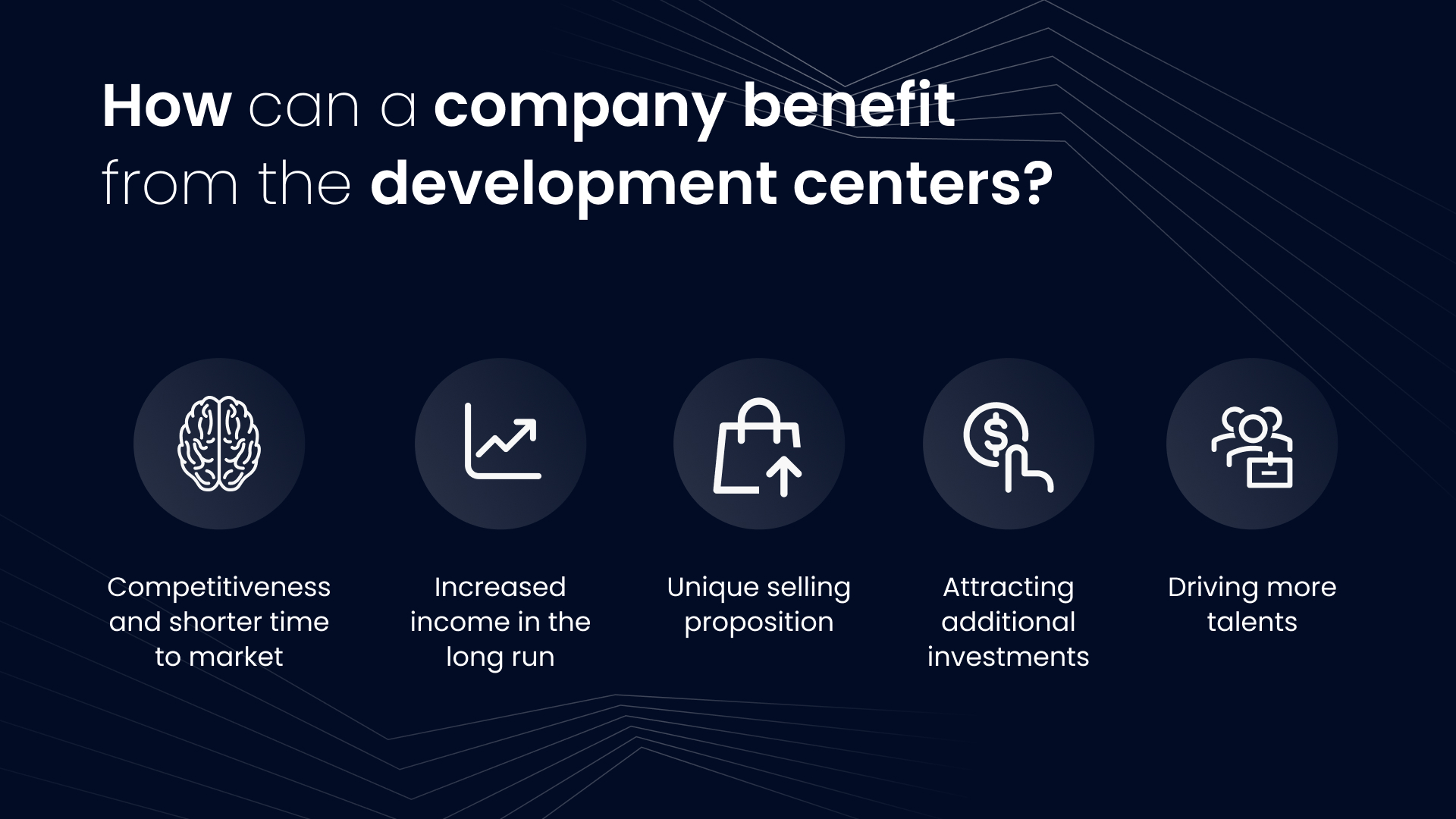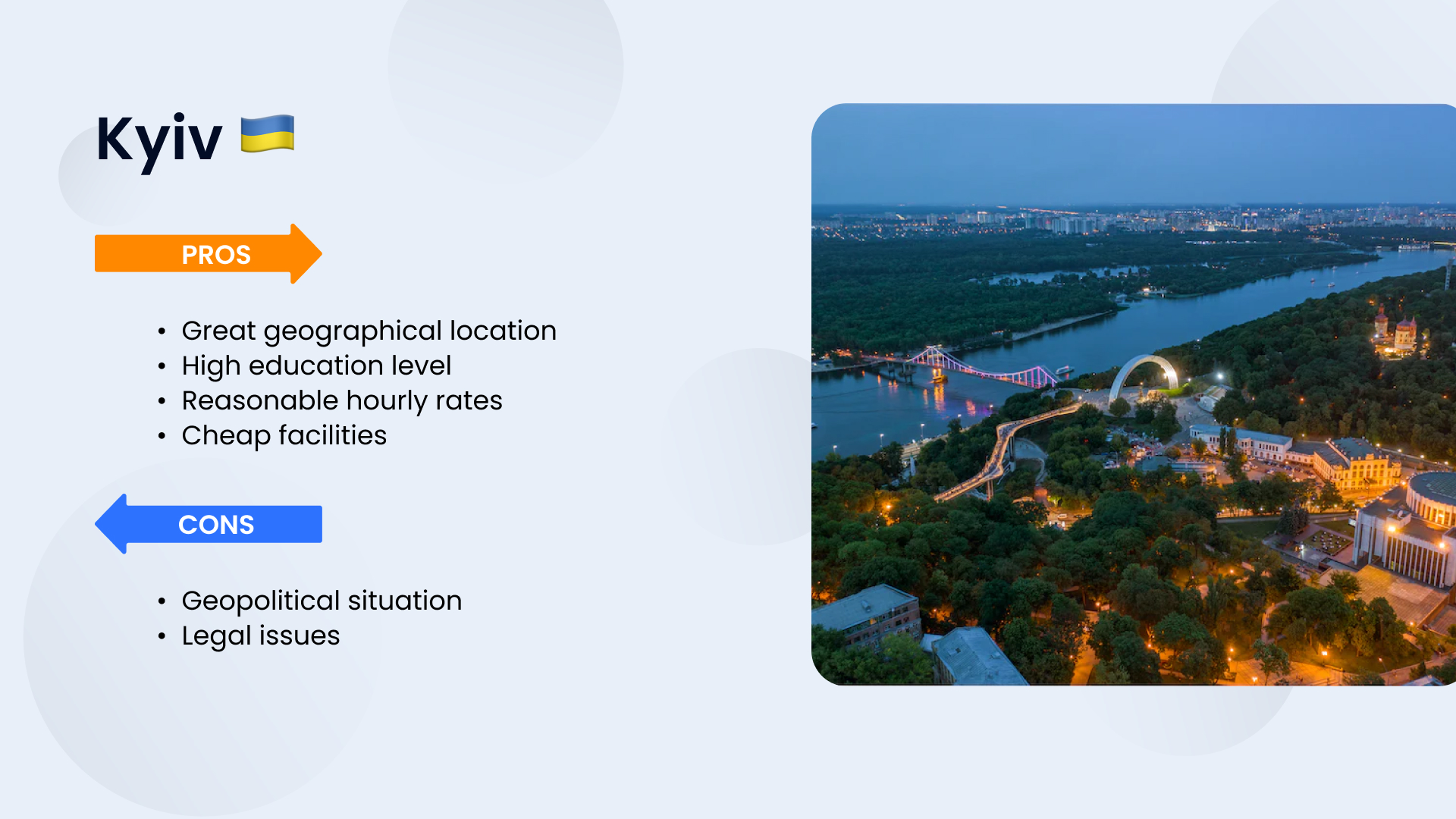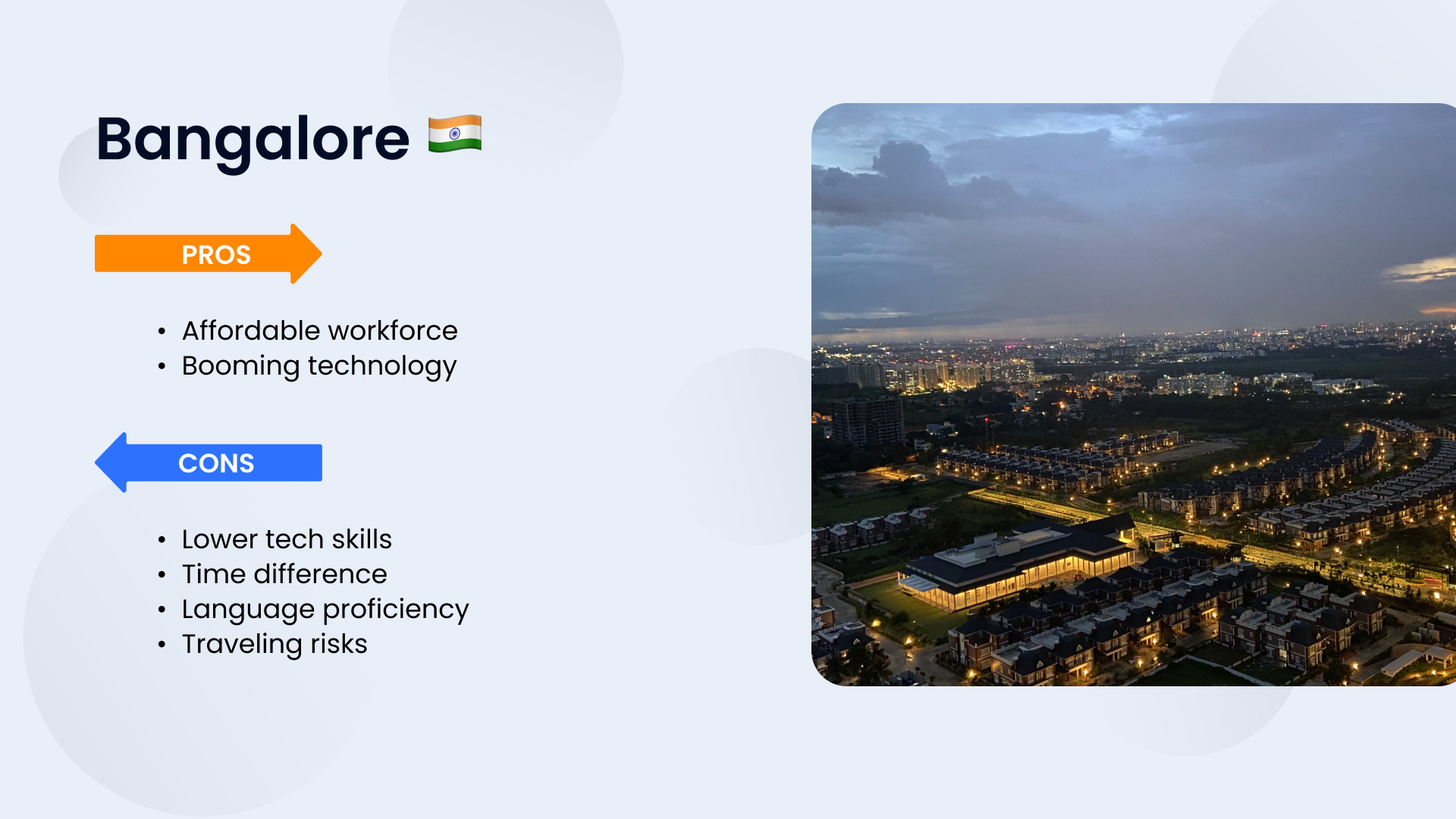Edited on: 06.26.24

The 2024 R&D market is driven by several key trends. Sustainability and clean energy are attracting significant research investment due to pressing environmental concerns. Artificial intelligence and machine learning have become top priorities for researchers. The fight against COVID-19 continues to fuel research efforts alongside a focus on broader healthcare innovation. Geopolitical tensions are also influencing technological advancements.
Collaboration is emerging as a key driver. Open innovation models are gaining traction, with businesses, academic institutions, and governments working together. This collaborative approach breaks down traditional barriers, helping the industry benefit from external ideas, resources, and pathways. A prime example is the recent shift in R&D project taxation within the UK.
[ Let MWDN R&D specialists discover your uniqueness! ]
The global R&D landscape is undergoing a significant shift. While Israel, South Korea, the USA, Belgium, and Sweden were the top R&D investors in 2021, emerging economies like China, India, and Brazil are playing increasingly pivotal roles. The dominance of OECD countries (representing 38 of the world’s most developed economies) is waning. China, the largest non-OECD economy, has emerged as a major player, contributing a significant 27% of global R&D investments in 2021 and representing a whopping 98% of non-OECD investment. Despite this shift, the US remains the top spender overall, funding 32% of global R&D in 2021.
Content:
- What are the R&D centers?
- How can a company benefit from the development centers?
- How much does it cost to open an R&D center?
- Where is it better to open an R&D center?
- What’s new in the R&D sector in 2024?
The good question to start with is, what is R&D? The abbreviation stands for research and development. A company can initiate these activities when in need to launch a new product, service, software, etc. Previously, R&D was associated mostly with the pharma and tech industries, though any company can apply it to create something innovative. In this context, we can shape the main R&D meaning and aim as “Find out something cool you can sell before anyone else does.”
In this article, we will deal with the most common questions about R&D centers you may have when you decide to open one.

What are the R&D centers?
R&D centers can be either in-house departments of a company or can be outsourced to a team of corresponding specialists. Huge enterprises can even open their research and development centers abroad, thus not only getting qualified employees cheaper but also gaining their insights on the local market. For small business owners, outsourcing an R&D center is much more appealing as it helps to save the budget on hiring an internal team of experts with specific skills.
How can a company benefit from the development centers?

If you still doubt whether to open an R&D center, here are 5 basic advantages you can get from it:
- Competitiveness and shorter time to market. Research and development help you generate brand-new products and services. No need to say if you launch them faster, your company will be able to stand out from the competitors.
- Increased income in the long run. This point comes straight from the previous one. As far as you can be the first to market state-of-the-art products or services, you have a higher chance of attracting more customers. Winning their loyalty will increase your revenue over time.
- Unique selling proposition. USP, or unique selling proposition, is also closely connected with the previous benefits we’ve listed. Offering an unusual solution that solves one of the main customers’ pains allows to build strong long-term relationships with them.
- Attracting additional investments. Though research and development can be quite costly, especially for small and mid-sized businesses, it can also help you get public funding by winning industry-specific grants.
- Driving more talents. Innovative companies are usually more appealing to top industry experts. By establishing an R&D center, you are more likely to attract better specialists than other companies.
Finally, by building lean R&D systems, you can optimize business processes and increase your company’s efficiency while reducing spending. Toyota Production System was the first to implement lean principles into their research and development, which helped them to improve the quality of their products, reduce costs, and speed up delivery.
How much does it cost to open an R&D center?
The National Science Foundation found that in 2016 U.S. micro-companies (consisting of 5-9 employees) spent $1.2 million on research and development, while huge corporations (with 25.000+ employees) spent around $148.3 million.
According to Statista, in 2022, the total expenditure on research and development (R&D) worldwide amounted to a staggering 2.5 trillion dollars, with almost 21% of spending made in the software and internet sectors.

R&D spending by industry worldwide, 2022 | Statista
However, you shouldn’t be scared of these numbers, as R&D costs can differ heavily from some minor investment to billions of dollars, depending on such factors as:
- Industry
- Your company size
- Time spent on research and development
- Number of people on the R&D team
- Location of your R&D center
We will cover the most affordable locations for opening your research and development center later on, and now let’s have a look at how much international companies usually spend on R&D.
How much other companies spend on R&D
According to PwC’s report, most of the global companies that spend more on R&D, manage to increase their revenue. Here’s a comparison table for 2017 and 2018:
| Rank | Company | Industry | R&D expenses
(billions) |
Revenue
(billions) |
||
| 2017 | 2018 | 2017 | 2018 | |||
| 1 | Amazon | Retailing | $16.1 | $22.6 | $136.0 | $177.9 |
| 2 | Alphabet | Software and services | $13.9 | $16.2 | $90.3 | $110.9 |
| 3 | Volkswagen | Automotive | $13.8 | $15.8 | $260.9 | $277.0 |
| 4 | Samsung | Technology hardware | $14.3 | $15.3 | $189.0 | $224.3 |
| 5 | Intel | Semiconductors | $12.7 | $13.1 | $59.4 | $62.8 |
| 6 | Microsoft | Software and services | $13.0 | $12.3 | $85.3 | $90.0 |
| 7 | Apple | Technology hardware | $10.0 | $11.6 | $215.6 | $229.2 |
| 8 | Roche | Pharmaceuticals | $11.8 | $10.8 | $54.0 | $57.2 |
| 9 | Johnson & Johnson | Pharmaceuticals | $9.1 | $10.6 | $71.9 | $76.5 |
| 10 | Merck | Pharmaceuticals | $10.1 | $10.2 | $39.8 | $40.1 |
As you can see, research and development don’t consume all the money you receive from running your business, it’s just a tiny part of your profit.
Here are some up-to-date numbers. These are the seven largest Nasdaq companies by capitalization and their spending on R&D in 2022, according to StockAnalysis:
- Amazon has spent $73,2 billion, which is 14% of their revenue.
- Alphabet has spent $39,5 billion or 14% of their revenue.
- Meta spent $35,3 billion or 30% of their revenue. This wasn’t a wise thing to do, as we can see now.
- Apple gave $27,7 billion to R&D, or 7% of their revenue.
- Microsoft has spent $26,6 billion (13%).
- Nvidia gave in $7,3 billion, equal to 27% of their revenue.
- Broadcom has spent $4,9 billion or 14% of their revenue.
Looking back from 2024, we can state that not all investments in research and development are returned, and even the largest players can make mistakes.
Now let’s figure out which locations for opening an R&D center are the cheapest and the most suitable if your company isn’t a multinational corporation.
Where it’s better to open an R&D center
Even international companies with billions of dollars of revenue strive to save on opening offices or R&D centers. No wonder small and medium business owners are also looking for cheaper places and workforce. Yet, sometimes you need to consider not only budgets but also a couple of other things:
- The skills of your potential employees and the availability of the talents you need. To make sure you will find there the necessary experts, you can check open R&D jobs in the location you’ve chosen.
- A suitable ecosystem that consists of both facilities for your R&D project and the state of the business environment. The latter means you should take into account the quality of education in the country, the competitors that can hunt for top professionals, tax policies, and so on.
- Accessibility of your remote team. Can you ensure smooth and instant communication with them? Can you easily travel to their office or invite them to the headquarters for an in-person meeting?
- Political and legal risks. These may comprise visa policies, non-disclosure agreements for data protection, copyright and patent infringements, etc.
To simplify your decision-making, we’ll review the 3 cities where you can potentially open an R&D center and dwell on the pros and cons of each.
San Francisco, USA

Best known for its Silicon Valley, San Francisco has truly become the heart of innovation worldwide. Though it’s mostly associated with tech unicorns, a lot of smaller startups, as well as companies from other industries, are also located there. Still, is it great for your R&D center?
Pros
- Top talents. Silicon Valley works like a magic wand for them.
- Prestigious location. Just imagine SF on a business card. Looks impressive, right?
- Lots of investors. Potentially, it will be easier to find additional funding here.
Cons
- Overly expensive. It’s like owning a personal cruise liner.
- Huge competition. You’re not the only employee who wants to have the coolest guys on board. What’s more, you will have to compete for investors’ attention as well.
The disadvantages look less numerous, but they can definitely outweigh the amount in volume. You’ll see this is the case when the quality of the business environment cannot exceed expenses on it and high competitiveness.
Kyiv, Ukraine

Over the past decade, Kyiv has proven to be a fast-growing IT hub. It’s a home for Grammarly, Preply, Petcube, Jooble, and many other companies that are known worldwide. Below, you’ll find out why they like it and decide if it’s good enough for you, too.
Pros
- Great geographical location. It allows you to easily travel to your R&D center without spending a fortune on your trip. Also, the time difference is almost insignificant (UTC+2:00), which helps to coordinate business hours and keep in touch whenever necessary.
- High education level. More than 61% of the employees in IT companies obtain a STEM degree. 34% of them have intermediate, another 34% — upper-intermediate, and 13% advanced level of English. This means you won’t struggle with miscommunication or hiring people with poor professional skills.
- Reasonable hourly rates. The average salary of an IT engineer is $1.600, which makes outsourcing companies deliver cheaper services.
- Cheap facilities. Compared to the US, renting an office will cost you twice as much: around $500 per month.
Cons
- Geopolitical situation. In February 2022, Russia invaded Ukraine. As of January 2024, Ukraine is fighting back and showing resilience that few expected. The country’s IT sector is one of those that keep the state’s economy going, so IT vendors providing outsourcing and staff augmentation services to international clients do everything possible and impossible to continue performing.
- Legal issues. Mainly, it’s all about corruption in all spheres, including the judicial one, but the level of information protection is also lower than in the US or the European Union.
As you can see, if you decide to open your R&D center in Ukraine, you should be ready to take some risks. Still, the benefits of locating your hub there are numerous.
Bangalore, India

India is the next one to step onto the road of innovation. Partially, this is due to government initiatives that make this country attractive to such companies as Bosch and Intel, among others. Here are some advantages and disadvantages of locating your research and development center there.
Pros
- Affordable workforce. India has one of the cheapest developers’ rates worldwide and the rent is also inexpensive.
- Booming technology. In 2019, the country managed to rank 52nd in the Global Innovation Index.
Cons
- Lower tech skills. Indian developers rank 35th among other countries, based on the tests of their skills.
- Time difference. UTC+5:30 means it will be hard to align your schedules and you will have less control over your project.
- Language proficiency. Unfortunately, most specialists have a low level of English.
- Traveling risks. When going to India, you will need to have a medical examination and a number of vaccines to stay safe.
What’s new in the R&D sector in 2024?
One notable aspect of the tech world in 2022-2024 has been the challenges faced in the mass production of AR and VR gadgets, with Meta being a key player in this field. Despite their heavy investment in VR and AR technologies, Meta’s Reality Labs reported operating losses of $13.7 billion in 2022. This significant financial setback reflects the broader challenges in the AR and VR sectors.
The difficulties in successfully commercializing AR and VR technologies, particularly the failure to mass-produce these gadgets, have had considerable impacts. For Meta, this has meant reassessing their strategies and investments. Meta’s experience highlights the risks associated with pioneering new technologies and underscores the importance of balancing innovation with practical market considerations.
At the same time, there is an AI. In 2022, Microsoft invested approximately $13 billion in OpenAI, which was a substantial financial commitment that highlights the company’s focus on advancing in AI technology. This partnership infused OpenAI with considerable resources and led to the integration of OpenAI’s advanced AI technologies into Microsoft’s products, further solidifying Microsoft’s position as a leader in the AI domain.
Summing up
The significant financial losses incurred by major players like Meta in their VR and AR ventures highlight the uncertainties surrounding the commercial success of innovative technologies. However, despite these risks, continuous investment in R&D remains a fundamental driver for success, as technological innovation is at the heart of staying competitive and relevant in the tech sector. Companies that shy away from investing in new and potentially groundbreaking technologies risk falling behind their more daring counterparts.
While not all R&D investments guarantee immediate returns or success, they are critical in paving the way for breakthroughs that can redefine the market and bring a company to new heights. The key is balancing the pursuit of innovation with strategic planning and market analysis. Book a call with MWDN specialists to find out more about our R&D capabilities and the ways we can help you cut costs.

